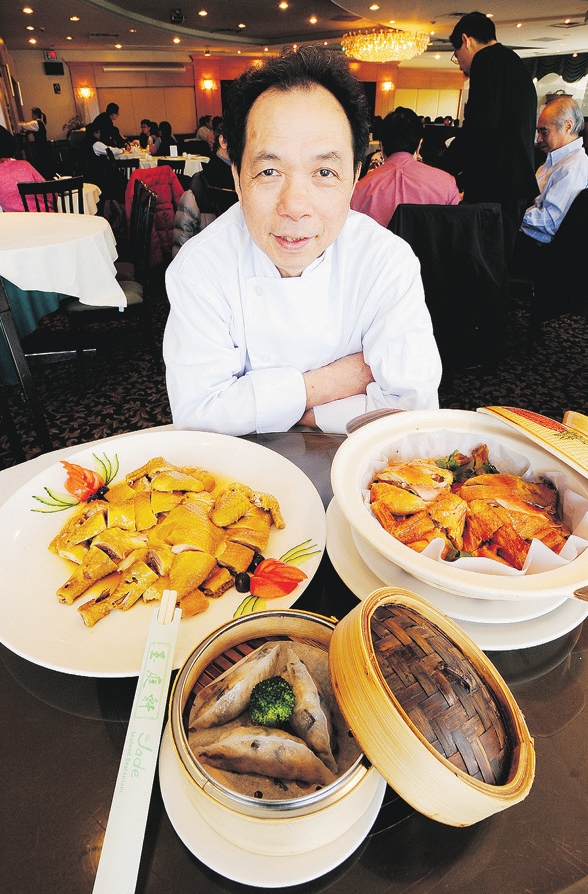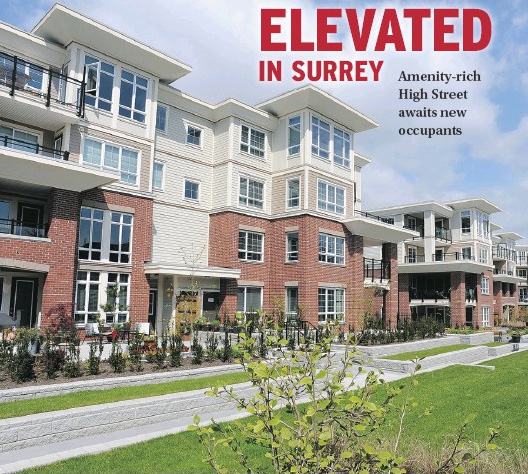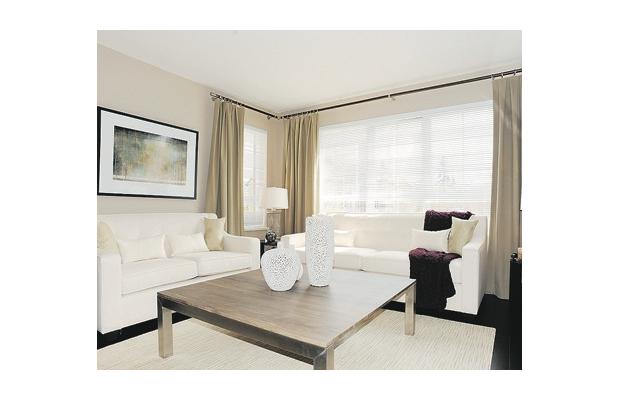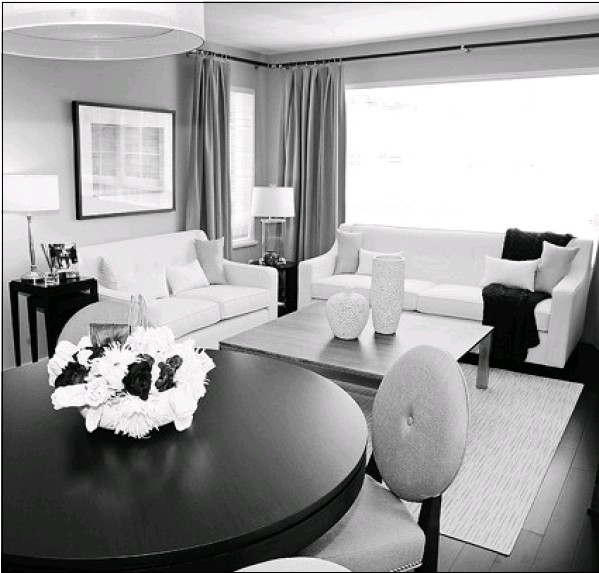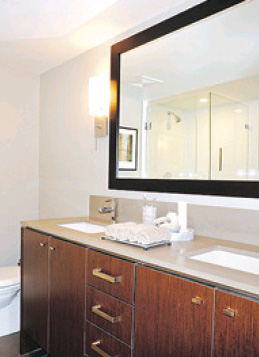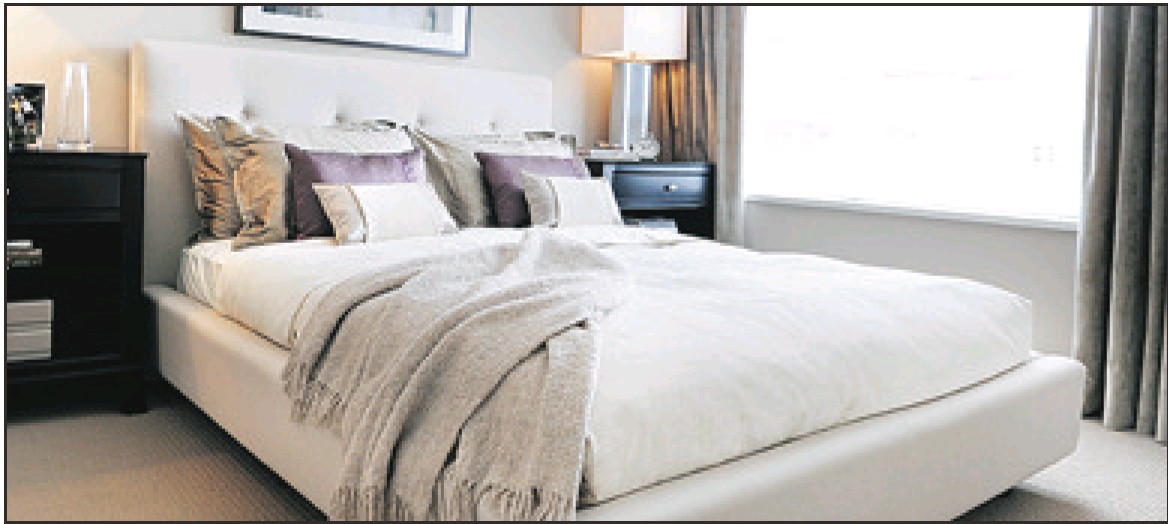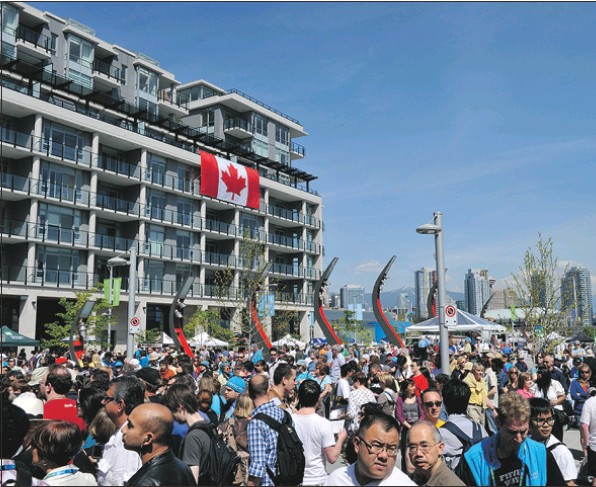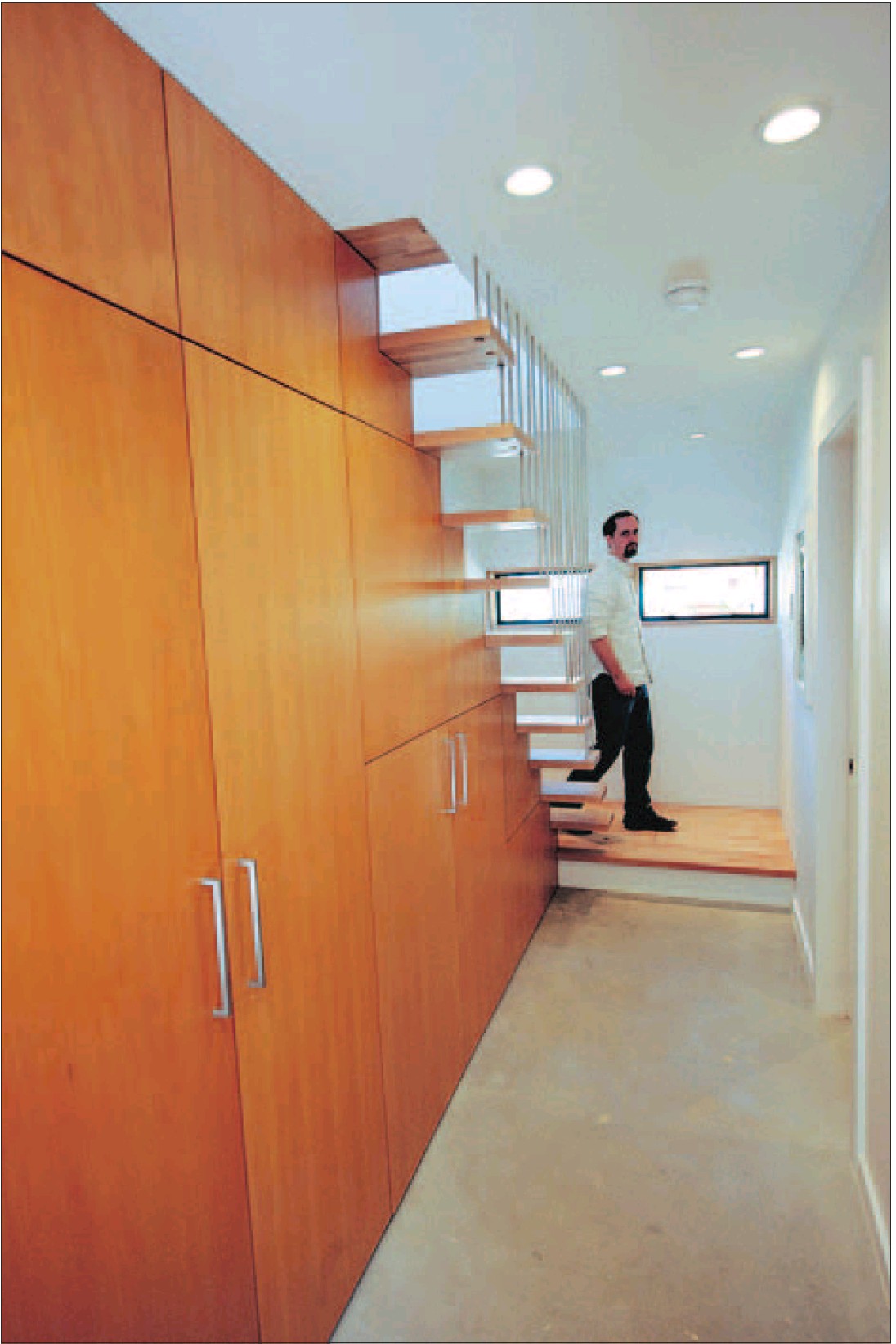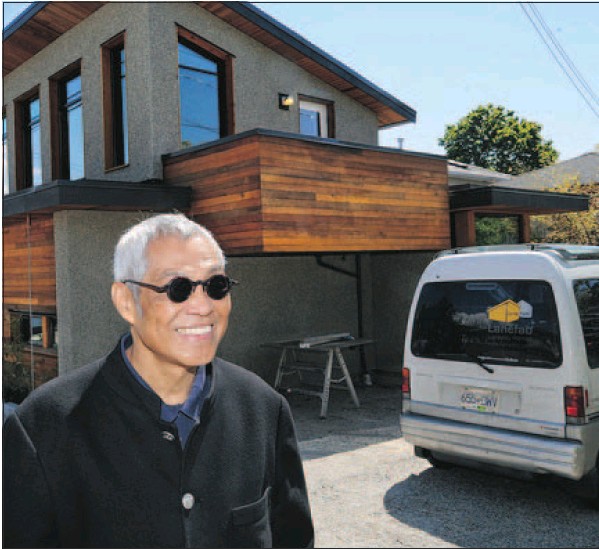Urban renaissance combines modern sensibility with Asian heritage, in a balancing act that whispers ‘everything is going to be alright’
Doug Ward
Sun
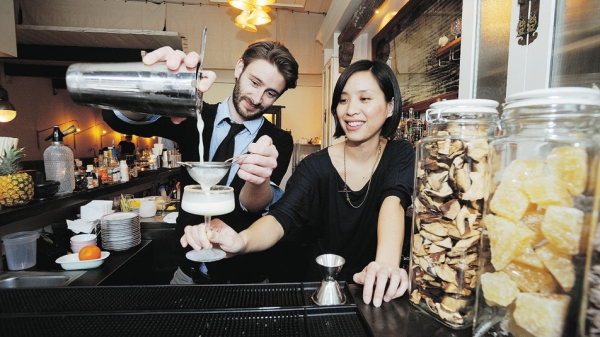
Owner Tannis Ling, a former bartender, helps Patrick Francis as he mixes a Chino Margarita at Bao Bei Chinese Brasserie, a new high-end restaurant in Chinatown. Photograph by: Stuart Davis, PNG, Vancouver Sun

Orville Lim in the Lim Benevolent Society’s building on Carrall Street. Photograph by: Arlen Redekop, PNG, Vancouver Sun

Bob Rennie stands atop his offices and art gallery with his director Wendy Chang. Photograph by: Stuart Davis, PNG, Vancouver Sun
On a Friday night in early May a private party is being held beside a rooftop sculpture garden in the Wing Sang building, the oldest in Chinatown, and now the home of condo marketing wizard Bob Rennie’s new contemporary art gallery and his business operations.
To the 1889 building on Pender Street where Chinese immigrant businessman Yip Sang once lived with his four wives and 23 children, Rennie has invited close friends, art collectors, curators and a few media types, in honour of Richard Jackson, the Los Angeles artist whose conceptual work he has purchased extensively and is exhibiting.
After the party has wound down, Rennie Collection director Wendy Chang gives a mini-tour of the new exhibit. A wander through the gallery leaves the mind boggling at what Yip Sang, who made his fortune as a labour contractor for the CPR, would have made of some of the art now in his former home. There are bears with urinal heads and urinals with bear heads, for example; products of an imagination so wonderfully twisted, it’s as if the visiting neo-Dadaist Jackson absorbed some lingering fumes from the opium produced out back in Market Alley in the late 1800s.
The bizarre bears can be seen as symbolic of the new economic and cultural values giving Chinatown a fashionable buzz after more than two decades of decline.
Chang, a first generation Chinese-Canadian, accompanied her parents as a young girl when they went shopping in Chinatown in the years after they moved here from Taiwan in 1977.
“Growing up Chinese in Vancouver, Chinatown used to be where your parents went,” said Chang.
But in the following decades, Chang spent little time in Chinatown, preferring to get her “Chinese fix” in Richmond or other suburbs.
“But now Chinatown is cool, it’s hip, it’s fun. You don’t go to Chinatown now because it’s the only place to get Chinese goods.
“You go because it’s exciting. It’s a fun place to socialize.”
Predictions of renewal are not new in Chinatown and talk of chic new restaurants or cool new retail on Pender Street shouldn’t obscure the challenges here.
Chinatown will never again be central to Metro Vancouver’s Chinese community the way it was in the late 1800s and for most of the last century.
Chinese-Canadians are now one-third of Metro Vancouver’s population — and they live, work and shop everywhere.
No other urban area in North America has a more integrated Chinese community.
“Go to Los Angeles or San Francisco and you notice a heavy Chinese presence,” said University of B.C. history professor Henry Yu. “But there are great swaths of those cities where Chinese don’t live. But in Vancouver, the Chinese live everywhere.”
Chinatown’s role has been usurped by Chinese malls and stores in Richmond, Coquitlam and southeast Vancouver. The new generation of Chinese-Canadians, especially those who arrived in the 1990s — largely affluent and sophisticated — feel little connection to Chinatown and its down-market milieu. The best Chinese cuisine is no longer found on Main, Pender and Keefer streets.
“Chinatown used to exist by necessity, but times have changed and now we have to plan Chinatown for Vancouver and really for the nation,” said Jessica Chen, a social planner at city hall.
Heritage hang-ups
Another factor behind Chinatown’s inertia is the neighbourhood’s unique land market. Real estate is largely dominated by small 25-foot lots with diffuse ownership. There are 32 designated-heritage buildings, 12 of them owned by 11 Chinese family and clan-based societies whose aging memberships are unwilling to sell and struggling to find the millions of dollars needed to upgrade.
Chinatown‘s laneway proximity to the social problems of the Downtown Eastside has also contributed to its hard-luck status.
Chinatown‘s inertia, however, has an upside. The neighbourhood’s distinctive hybrid of Asian and British Commonwealth balcony-style architecture has survived, untouched by real-estate speculation.
“It’s been a double-edged sword because these heritage buildings have helped conserve the character of Chinatown even as they’ve been a challenge for adopting new uses,” said UBC’s Yu.
He said Chinatown’s historic streetscape is what makes it special.
“Chinatown is still the symbolic heart of our history as a half-Asian, significantly Chinese, city,” said Yu. “We need a place where that kind of mythic meaning is contained.”
Yu said the days when Chinatown had a monopoly on Chinese goods “is never coming back, but what could emerge is a viable commercial concentration tied to, I hope, museums and art galleries.”
This is also the hope of Rennie Collection director Chang, who senses a different pulse in Chinatown these days.
“It’s not about gentrification,” said Chang. “It’s just about having more life on the street and a different mix of people.”
Non-Chinese entrepreneurs may increasingly become players in the neighbourhood. But Chinatown’s Chinese identity — just like many of the original features in the Wing Sang building — will remain, said Chang.
“This building is quite different from a hundred years ago. But really wonderful elements have been retained, like the brick wall. You can keep good aspects of the history and still move forward. This building is alive again.”
So is Chinatown — relatively speaking.
Chang mentions other new arrivals to Chinatown since Rennie opened his Wing Sang redoubt last October.
On Keefer Street, near Main, is the new Bao Bei Chinese Brasserie, a modern Shanghainese-Taiwanese restaurant/bar, owned by Tannis Ling, who established a reputation mixing drinks at Chambar, a restaurant just west of Chinatown.
Bao Bei (which means precious) is perhaps the first quality Chinese restaurant to open in Chinatown in a generation — and it’s been a hit since Day 1 with its mostly young, white, professional clientele.
“I felt it was time for Chinatown to have something like this,” said Ling. “There was a hole in the market here, which was a Chinese restaurant with good food, good drinks and a comfortable atmosphere.”
Rennie’s gallery was one factor that convinced her she wasn’t moving into a “no man’s land.”
“Culture is always moving outward from something that [has been] done to something new, to areas that are not gentrified or too expensive.”
Ling’s chic eatery is almost a template for the Chinatown she hopes will emerge — an almost post-racial neighbourhood that blends its Chinese identity — the heritage buildings, the barbecue pork, the fish, meat and produce stores — with a modern sensibility.
Even Ling’s key staff is multicultural: her chef is half-Japanese and half-French, while her new manager is Taiwanese but raised in Montreal. “I want Bao Bei to be an international place and not just Vancouver or Chinese.”
Ling is loath to apply the word “hipster” to the new Chinatown vibe — “but I guess you could say it’s trendy to be in Chinatown now because of all the places that have opened up here.”
Ling hopes other businesses follow her example. “It would be great to be at the beginning of a trend. Obviously, the bigger it gets, the better I’ll do. At the same time I don’t want the old businesses to be bought up and have a Chapters here or something.
“I like the old-time authentic feeling: The old people doing stuff and everything smelling funny. I love being able to walk down the street and doing all my shopping for my cocktails.”
Rooted in history
The notion that Chinatown has a unique sense of authenticity, something that sets it apart from the other downtown neighbourhoods with rows of residential towers bordered by Starbucks outlets, is what inspired Cam Watt to spend $10 million developing the Keefer, the new boutique hotel-residence down the block from the Bao Bei.
Watt, founder of the Canadian Springs water company, spent $10 million converting the five-storey brick warehouse built in 1907.
The revamp was designed as high-end lofts, but the Great Recession hit, so Watt turned them into exclusive crash-pads, with monthly rental fees of $7,000 to $10,000.
The hotel features giant portraits by Watt’s boyhood friend, author Douglas Coupland, in the lobby and a glass-bottomed pool that functions as the ceiling of the fifth-floor penthouse.
Below, at street level, is the Keefer bar, a cool new boite luring young professionals with tapas, Asian-inspired drinks and subdued lighting.
“I was looking for a building that I would live in myself. I’ve lived in different neighbourhoods and was bored with Yaletown and Coal Harbour,” said Watt. “Chinatown could become the Soho of Vancouver. It’s got the original architecture, the small storefront stores. People are drawn to it.”
Chinatown has been a place that closed up after 5 p.m. for a long time, said Watt.
“Nobody would come here after that. But now with our lounge and the Bao Bei up the road — Chinatown is now an option.”
Adjacent to Rennie’s building on Pender is the new East condo development, with its 22 units, and a street-level eatery called Everything Cafe, run by Sean Heather, who owns several hip restaurants in nearby Gastown.
Joining fashionable furniture outlets like Peking Lounge and Bombast on Pender are Storm Salon, a higher-end hairstyle joint recently arrived from Robson Street; Blim, an arts and crafts retail space, which recently moved from trendy Main Street; and the new Fortune Sound Club, the former home of Ming’s Restaurant, where Jay-Z came to party in March to the beat of the club’s $200,000 sound system.
Fortune Sound Club is owned by Garret Louie and Robert Rizk, aka GMAN and Rizk, two longtime dance club promoters.
Louie loves being based in Chinatown because “it puts us off the beaten track” and away from the Granville Street clubs and their mainstream clientele.
Louie also remembers going to Ming’s with his Chinese family in his younger days.
“I used to eat in the ‘hood back in the day and I’ve seen Chinatown go through its phases. Even looking at photos from the ’60s, Chinatown was like Las Vegas with all the neon,” said Louie.
“These days I see a lot of little things popping off. It’s so close to Main Street and Strathcona, which are becoming really hip areas, too.”
Finding a balance
On the fringe of Chinatown, which needs an injection of new residents, are two new condo developments: Ginger at Main and Keefer, and V6A at Main and Union.
Vancouver city council wants more residential density in the area to shore up local businesses. Earlier this year, council raised maximum building heights on Pender Street to seven storeys and in the southern part of Chinatown from the current nine storeys to 12, with an additional three towers at 15 storeys.
Albert Fok, president of the Chinatown Business Improvement Association, has been a strong advocate for more density, which would provide more customers for his members. His mantra is that Chinatown should not be a museum.
The irony is that many of Chinatown’s more traditional businesses could fall victim to higher rents or more creative newcomers if Chinatown becomes more commercially viable.
UBC’s Yu doesn’t think the new commercial energy in Chinatown means it will become similar to the Washington, D.C., Chinatown, where Chinese culture serves as an exotic backdrop for chain restaurants and nightclubs for white urbanites.
“I would think that there would be too many people horrified at a D.C. outcome. Probably the resistance to it would be as much from non-Chinese as Chinese.”
One of those who would be horrified is architect Joe Wai, who was active in the struggle in the ’70s to prevent a freeway from tearing up Chinatown and Strathcona — and who has been active in the community ever since.
But Wai believes Chinatown needs the “critical mass of cultural tourism” and new retail investment to be sustainable.
“We are no longer the closed-shop, neon-signed, allegedly opium-infested, smoky Chinatown.
“Now you have diverse activity. Businesses like the Peking Lounge, which is run by non-Chinese, and Rennie and his gallery, although he has lots of Chinese employees.”
Social planner Chen favours slow change in Chinatown — a new restaurant or furniture store there, a rehabilitated interior courtyard there — what she calls “urban acupuncture.”
“We should embrace growth and development. But we need to focus on what is precious and what we shouldn’t lose. Chinatown’s unique identity shouldn’t get lost in the shuffle.”
The changes are all good, said Vancouver Coun. Kerry Jang, who recalled that “Chinatown was the centre of my universe as a kid.”
He went to Chinatown on the weekends with his mother, who “had three particular stores she always went to because she knew she could get the specialties from where she was born in China.”
Jang would also visit the heritage building of his extended family’s benevolent association, located above the former Ho Inn Restaurant, which is now the Peking Lounge, a Chinese antique store run by two white guys.
As a teenager, he would go to Ming’s Restaurant because he could order an alcoholic drink without being asked for his ID.
The Chinatown of Jang’s youth slowly faded away after Expo 86 as waves of ethnic Chinese migrants arrived in the region through the ’90s.
“Chinatown could support itself before because people actually lived down here. But that’s not the case any more,” said Jang.
“We need to make Chinatown a destination again. Places like the Bao Bei Restaurant are great because they provide people a reason to come down.”
Holding on to the past
You walk up three long and narrow flights of stairs — 45 steps to be exact — to get to the meeting room of the Lim Sai Hor Kow Mock Benevolent Association in a heritage building fronted by Carrall Street and Shanghai Alley.
Many of the Lim society’s members, now in their 70s and 80s, are finding the steep climb challenging. There’s talk about fundraising for an elevator.
Earlier this month, the society held an 80th anniversary dinner at the Floata Seafood Restaurant for more than 500 people, including members from Toronto, Los Angeles and San Francisco.
Orville Lim, a 57-year-old recently retired property assessor, is the society’s president. He came to Chinatown at age 11 from China. He and his family lived for several months upon arrival in a small Chinatown apartment on Pender Street, above the old Green Door Restaurant, until enough money was raised to cover a down payment on a house near Cambie Street.
These days, Lim is trying to honour his forebears and Chinatown by saving the building that bears his family’s name.
In the back of the top floor are tenement-style rooms used for decades by Chinese migrants who worked on the railways, farms or elsewhere in Western Canada.
The society is one of six Chinatown benevolent societies involved in city-funded studies into how their increasingly dilapidated buildings can be rehabilitated.
The city has provided $100,000 to each society, which in turn have contributed $20,000 apiece to the feasibility studies.
Architects have told the Lim society it will take $1.75 million to restore the building’s original facade and make the necessary structural and seismic upgrades.
Lim said architects found the building has “more than average sway.”
“But don’t worry, it’s not about to fall down,” he told his guests during a tour.
Lim said the society hopes to raise money through donations from members, including from wealthier ones capable of providing large philanthropic contributions.
Lim said “time is really of some essence because many members are very elderly. And the younger generation is not very active.”
The society wants above all to avoid selling the property of their ancestors — as do all of Chinatown’s remaining societies. “It’s sort of like selling an arm or a leg,” said councillor Jang.
Questions about the future of the heritage buildings were raised by Rennie’s purchase of the Wing Sang building.
“There has always been a Chinatown but when the Wing Sang was sold, everybody was kind of in shock,” Jang said.
Over time, the shock has turned into mostly respect for how Rennie kept the building’s structure intact.
Rennie’s move to Pender Street also sparked hope among many Chinatown merchants and family associations that new investment would follow.
Revitalization, however, remains incremental.
The problem is the multimillion-dollar cost of saving heritage buildings with little prospect of a return on investment, said Rennie.
“You have to spend $3 million to get a substandard rent.”
Rennie said he’s “bewildered” by the slow rate of change.
“I don’t know whether the Bao Bei and the Keefer and the Rennie Gallery is what Chinatown’s been wanting,” he said.
“But it’s what they got.”
Embracing the modern
Rennie says that wealthier members of the Chinese family associations should help finance the upgrading of their time-worn buildings.
“I know that there are many society members that can afford this more than me.”
There have been three major real-estate plays involving historic buildings in Chinatown during the last 10 years: Rennie’s purchase of the Wing Sang, Watt’s hotel-residence on Keefer Street and investment manager Milton Wong’s redevelopment of the Chinese Freemasons building at Pender and Carrall.
That two of these three investors are non-Chinese with no roots in Chinatown isn’t lost on Carol Lee, who is spearheading a steering committee of prominent Chinese-Canadians on the future of Chinatown.
“We appreciate the contribution that Cam and Bob have made to the neighbourhood but we need to get more people from the Chinese-Canadian community engaged in Chinatown so they can become part of the solution,” said Lee.
Her committee is exploring ways to finance the upgrade of heritage buildings. “But we also don’t believe Chinatown should be static. We need new developments to make sure it is a vibrant community but one that reflects its cultural heritage.”
Lee, the president of skin-care company Linacare Cosmetherapy and daughter of developer and former UBC chancellor Robert H. Lee, moved her business office into her family’s original Chinatown building on Pender Street to show her commitment to the area.
Rennie says the societies will eventually follow the example set by himself and Watt at the Keefer, and view their buildings as philanthropic legacies.
“It’s a love affair — and we need more people to get addicted.”
Rennie wants the area to become a cultural precinct, anchored by the Sun Yat-sen Gardens, his own gallery and the historic family-based society buildings — with diverse retail and more residents bringing a new vitality to the street.
“I want to keep it diversified. If this turns into a mall, we’re gone,” said Rennie.
Chinatown needs to retain its heritage but embrace contemporary uses, he added.
“I think that’s what Bao Bei restaurant is. I mean Bao Bei is anything but Ming’s.”
And Rennie’s new art gallery — bear-shaped urinals and all — is anything but Yip Sang’s former home.
But the memory of the Chinatown pioneer remains in the building. And this unique blending of the remnant of Vancouver’s earliest years with modern style has generated optimism about Chinatown’s future.
An optimism perhaps best expressed by the 23-metre-long illuminated installation Rennie has permanently perched above his rooftop garden and over historic Pender Street.
The neon slogan that says: “Everything is going to be alright.”
© Copyright (c) The Vancouver Sun

